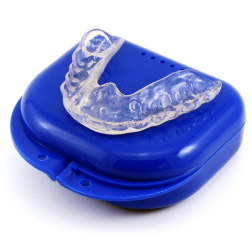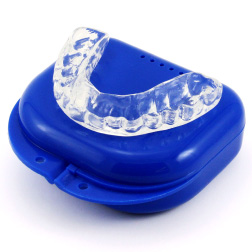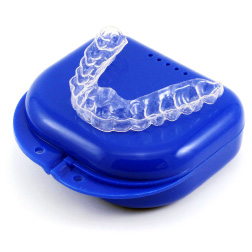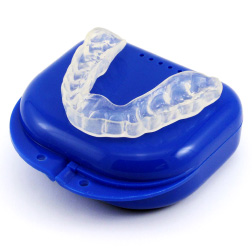Gum Pain In The Back Of Mouth
28th Aug 2021

Pearly white teeth might be the superstars of a winning smile, but there is no doubt that healthy gums are indispensable supporting players. In fact, gum health impacts your overall health in surprising ways. Painful, inflamed, or bleeding gums can be an indication of poor oral hygiene or a warning sign of another health condition. Poor gum care can set the stage for tooth decay and tooth loss. That's why the gums are on every dentist's checklist of things to observe when you go in for your regular dental checkup. Are you experiencing gum pain in the back of the mouth? Read on to learn why you might be experiencing pain and how to relieve the pain effectively.

Common Causes of Gum Pain in the Back of the Mouth
Wisdom teeth, or third molars, can cause gum discomfort in the rear of the mouth when they begin to come in, which typically happens during the late teens or early twenties. However, they are far from the only possible culprit. If you are fairly sure that your wisdom teeth aren't to blame, then you'll want to consider other potential causes. As Healthline reports, there are many possibilities:
Gingivitis:
Gingivitis is a mild form of gum disease (also known as periodontal disease), which causes bad breath and red, swollen gums that look puffy and irritated. Inadequate oral hygiene is generally the source of this dental health concern. Stepping up brushing and flossing and attending regular checkups with your dentist will normally correct the issue.
Periodontitis:
If gingivitis goes untreated, it can progress to this more serious form of gum disease. Here, infection attacks the tissue and bones that support teeth, creating a more serious problem for your dental health. It can cause painful gums, receding gums, bite change, toothache, abscesses, tooth loss, and more. If left untreated, corrective dental work such as root canals may be necessary.
Canker Sores:
These small, tender sores appear independently or in clusters under the tongue, along the cheeks, or on the gums. An over-the-counter pain reliever can help ease the discomfort that they cause.
Thrush:
Oral thrush is a fungal infection caused by an overgrowth of yeast, which involves white spots in the mouth. They are more common on the tongue and cheeks, but they can also appear on the gums and gum line and cause irritation on the soft tissue there. Thrush is treated with antifungal medications.
Hormonal Changes In Women:
Hormonal changes spurred by puberty, pregnancy, or menopause can affect blood flow to the gums and change the way that the body interacts with the toxins released by dental plaque. These changes can cause gum pain in the back of the mouth.
Problems With Dental Devices:
When used properly, dental appliances can correct bite problems and ease irritations. An ill-fitting dental device could rub tender gum tissues the wrong way and cause further gum problems. For example, using a one-size-fits-all night guard for bruxism is much more likely to cause gum irritation than a custom-fitted mouth guard for grinding teeth.

Treating Gum Pain
Gum pain in the back of the mouth can be a result of gum disease, canker sores, oral thrush, an ill-fitted dental device, or wisdom teeth growth. Identifying the cause of gum pain in the mouth is the first step in treating the pain. Fortunately, most gum pain can be treated with home remedies. To soothe your painful gums try the following:
- Take over-the-counter pain relievers such as Ibuprofen or Acetaminophen.
- Try warm salt water rinses.
- Be sure to brush gently with a soft-bristled toothbrush as you follow a solid oral hygiene routine that includes good gum care.
- Attend your usual dental cleanings consistently
If your gums are still bleeding or painful after a week, or if the gum pain in the back of the mouth becomes severe, then make an appointment to see your dentist. The dentist may take X-rays or do other tests to determine the cause of your pain and proceed with treatment.
Related Articles:
How to Care for Your Gums
If you are wondering what you can do to keep your gums healthy, the American Dental Association offers some helpful advice:
- Brush your teeth at least twice a day to reduce plaque buildup. Use a quality fluoride toothpaste and don't rush.
- Clean between your teeth at least once a day. Using floss or some other interdental cleaner can help clean hard-to-reach spaces. It is actually one of the best ways to keep your gums healthy and avoid gum disease.
- Consider using a mouthwash. The right product can help decrease plaque buildup, slow the accumulation of tartar, and prevent gingivitis.
- See your dentist for regular checkups and cleanings. While you're there, consider showing them how you brush and floss. Then, ask them for tips or suggestions.
- If you smoke or chew tobacco, stop. Tobacco use is associated with a higher risk of gum disease.
- Eat a healthy diet that contains a mix of nutritious foods, including crunchy fruits and vegetables.
A Gum Care Guide
It is always easier to face the world with a healthy, confident smile. Although teeth may get the most attention, no grin can truly be its best without great gums. Gum health plays an important role in both oral health and overall health, so it is important to pay attention to warning signs like gum pain in the back of the mouth and take prompt action if you notice them. Do you wear a night guard for bruxism? To avoid gum irritation, make sure that it is properly fitted. If you're looking for a new night guard, check out the selection at Pro Teeth Guard. We specialize in high-quality custom-fit mouthguards at affordable prices. Every night guard is guaranteed to fit comfortably with our 110% money-back guarantee. All of our products are crafted in a professional dental lab using professional materials and processes, so they're basically the same products that you would get from a dentist.
References:
- Osborn, C. O. K. (2019, March 8). Why are My Gums Sore? Healthline. https://www.healthline.com/health/sore-gums#takeaway
- JADA Writing Staff. (2015). Keeping Your Gums Healthy. The Journal of American Dental Association. https://jada.ada.org/article/S0002-8177(15)00245-7/fulltext#relatedArticles

- Most Popular
- Hard Outside, Soft Inside
- 2MM Thick
- Moderate / Heavy

- Most Durable
- Hard Materials
- 1.5MM Thick
- Heavy / Severe

- For Day Time Use
- Thin, Barely Visible
- 1MM Thick
- Light / Moderate

- For Clenching
- Flexible & Soft
- 1.5MM Thick
- Light / Moderate

